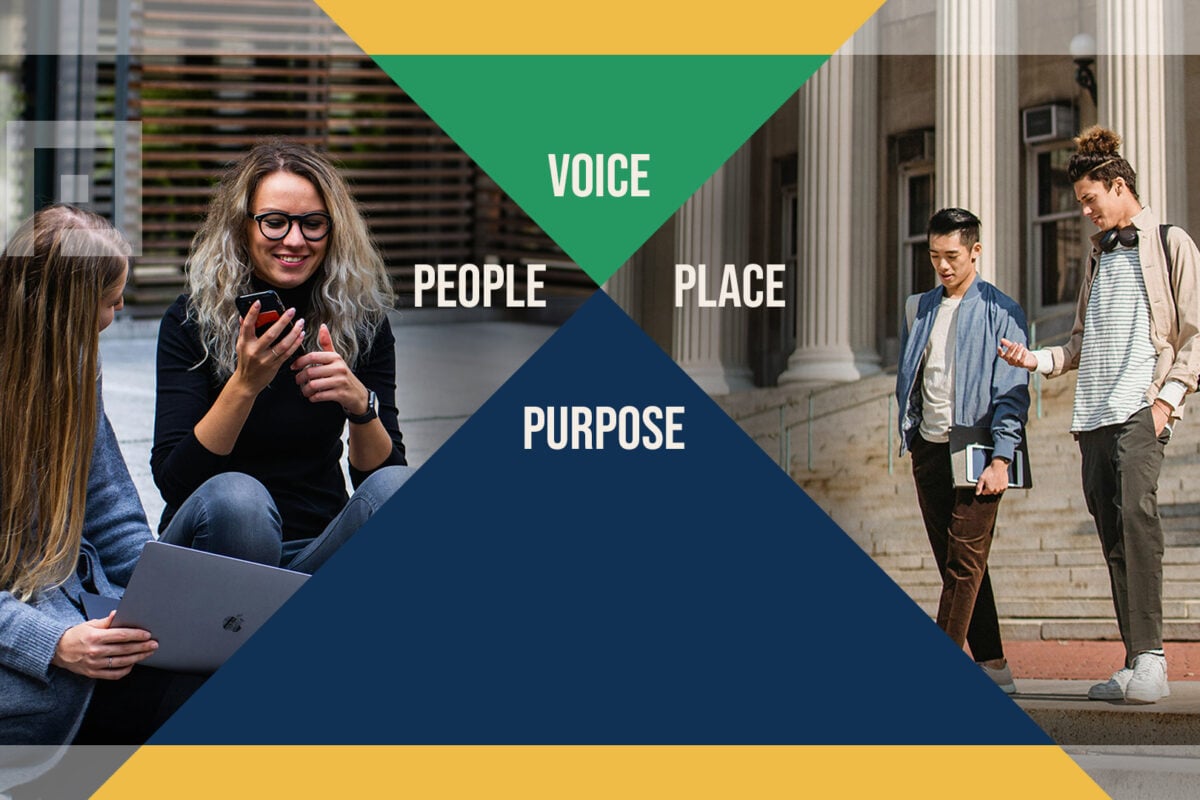In higher ed, few dispute the important role of customer service. Unfortunately, many institutions mistakenly feel as if they’ve already perfected it.
Their employees are helpful and more than willing to stop and provide directions to the library or student center. Many have participated in “conflict resolution” workshops and can effectively deal with the student who is angry about a parking ticket or a C+ in Economics.
But genuine “customer service” goes way beyond conflict resolution and student interaction. Institutions must consider the entire student experience and create a culture that continually attracts and retains students. We call it a student-first culture.
What is a Student-First Culture?
The positive effects of a student-first culture permeate every office, classroom and department in your institution. A true student-first culture ensures that all parts of your institution work in sync to provide a seamless experience—from the moment a student identifies your college as an opportunity, through the selection process, their entire academic journey, and into their alumni years.
During Paskill Academy’s recent Student-First Culture Workshop at Kansas Wesleyan University, we offered the following examples to our more than 100 attendees. If the admissions and financial aid departments aren’t working together, who suffers as a result? The student. And if the registrar’s office and the billing office aren’t cooperating, who pays the price? Again, the student.
The point being, every interaction in the student journey is potentially a make-or-break opportunity. A student-first mentality increases the odds of keeping that student on the path toward graduation.
Four Steps Toward Developing a Student-First Culture
First, redefine how you talk about customer service, then embed it into every step in the employment process. HR should accent it in the hiring process, beginning with candidate evaluation. Does this candidate have a service mindset? Will they work well with others? Then during onboarding, institutions must set expectations for how service is defined. From there, cultural integration continues through ongoing professional development.
Second, redefine “customer.” Tear down silos and set new expectations for how “customer” is defined. The service mindset should extend to everyone — internal customers and external customers beyond students and parents. Then encourage your people to display that service mindset in how they work interdepartmentally, as well as with students, parents, alumni and vendors. In the end, students will benefit most.
Third, commit completely. Cultural transformation cannot be accomplished through mere lip service. The administration must invest in professional development, and ongoing implementation must be ensured as part of your business plan. Execution should include creating expectations, establishing benchmarks and following up at least twice a year to confirm compliance. Over time, this becomes a campus-wide initiative, not something solely owned by enrollment services.
Finally, build momentum by highlighting people who are doing it well. Whether through messaging apps, internal communication platforms or old-fashioned town halls, spotlight individuals who have embraced the student-first culture and are living its values. Show your people that top-level service is recognized and appreciated.
To Give Your Campus the Student-First Mindset, Start Here
Professional workshops are a great place to start.
As Ken Oliver, executive VP of advancement and university operations at Kansas Wesleyan University, said, “Paskill Academy’s Workshop for a Student-First Culture exceeded my expectations! We had over 100 recruiters, staff, and faculty attend the two-day workshop. Everyone enjoyed it, and the feedback was very positive. I would highly recommend the workshop to anyone interested in improving their internal and external relationships and growing their enrollment!”
Reach out to us. Let’s discuss bringing a student-first culture to your campus.



